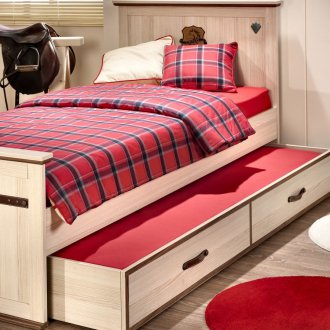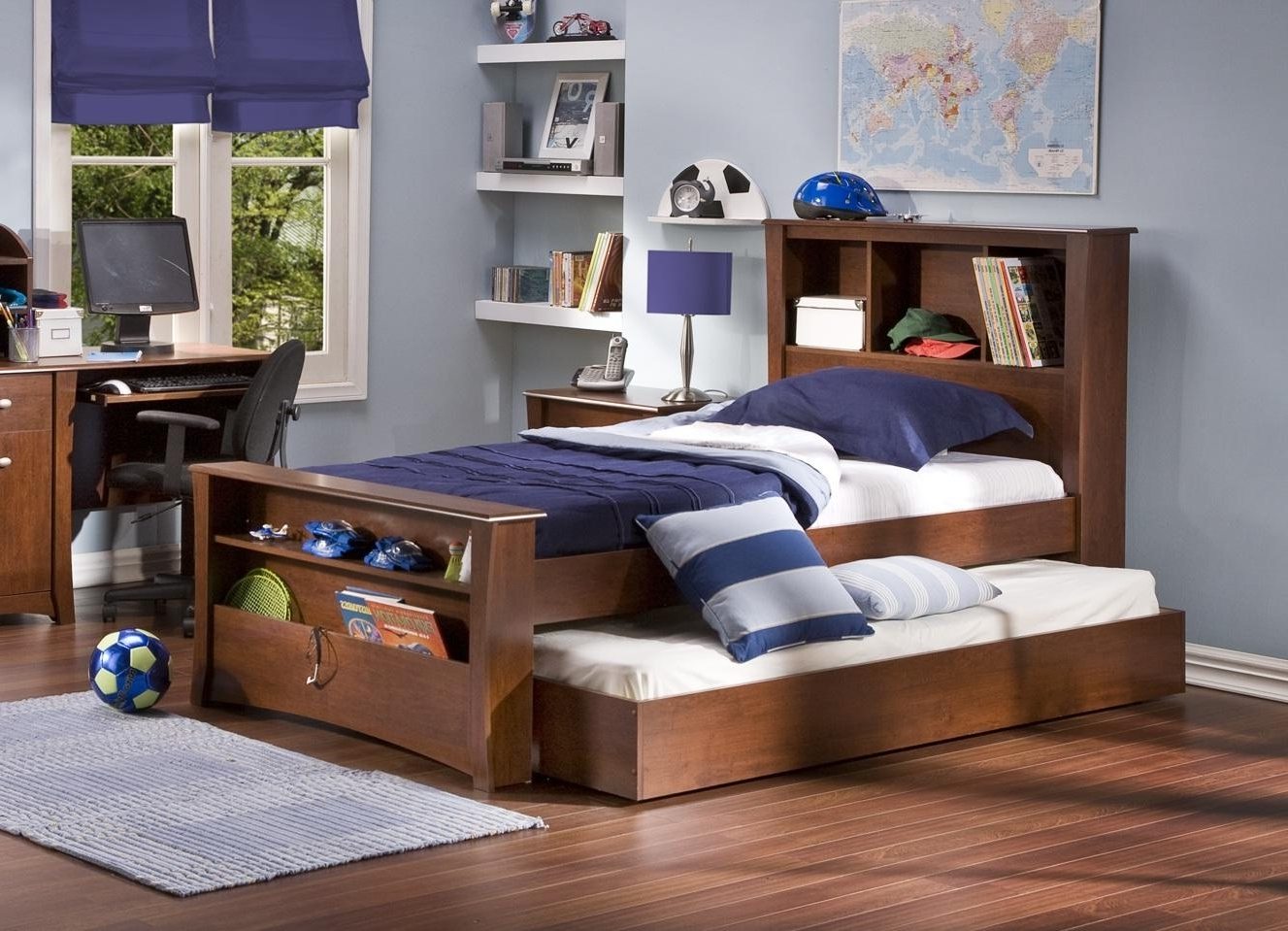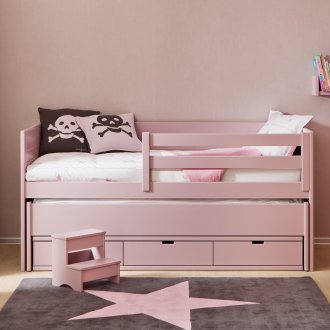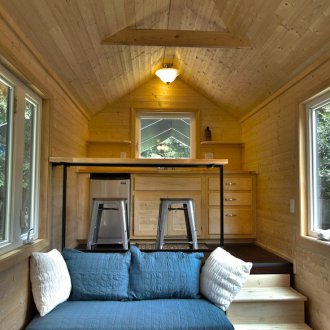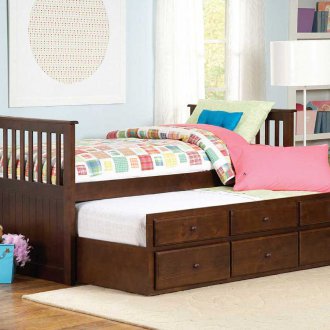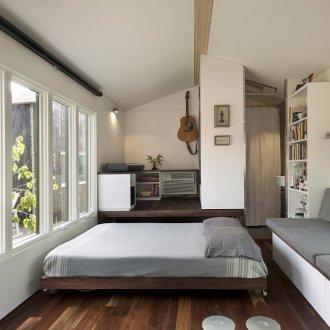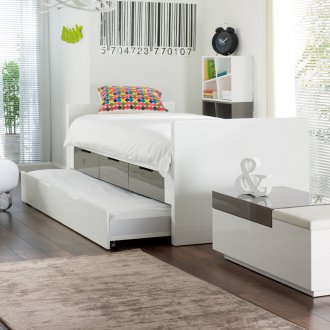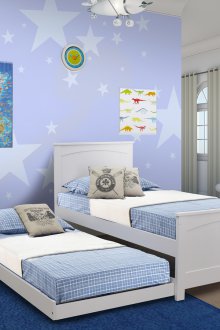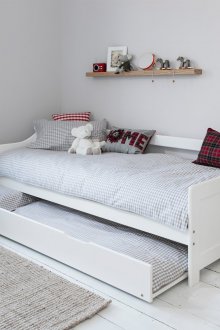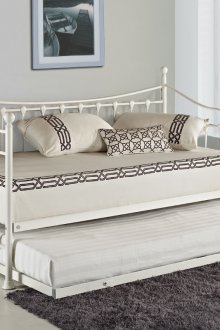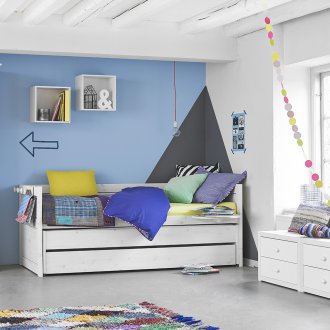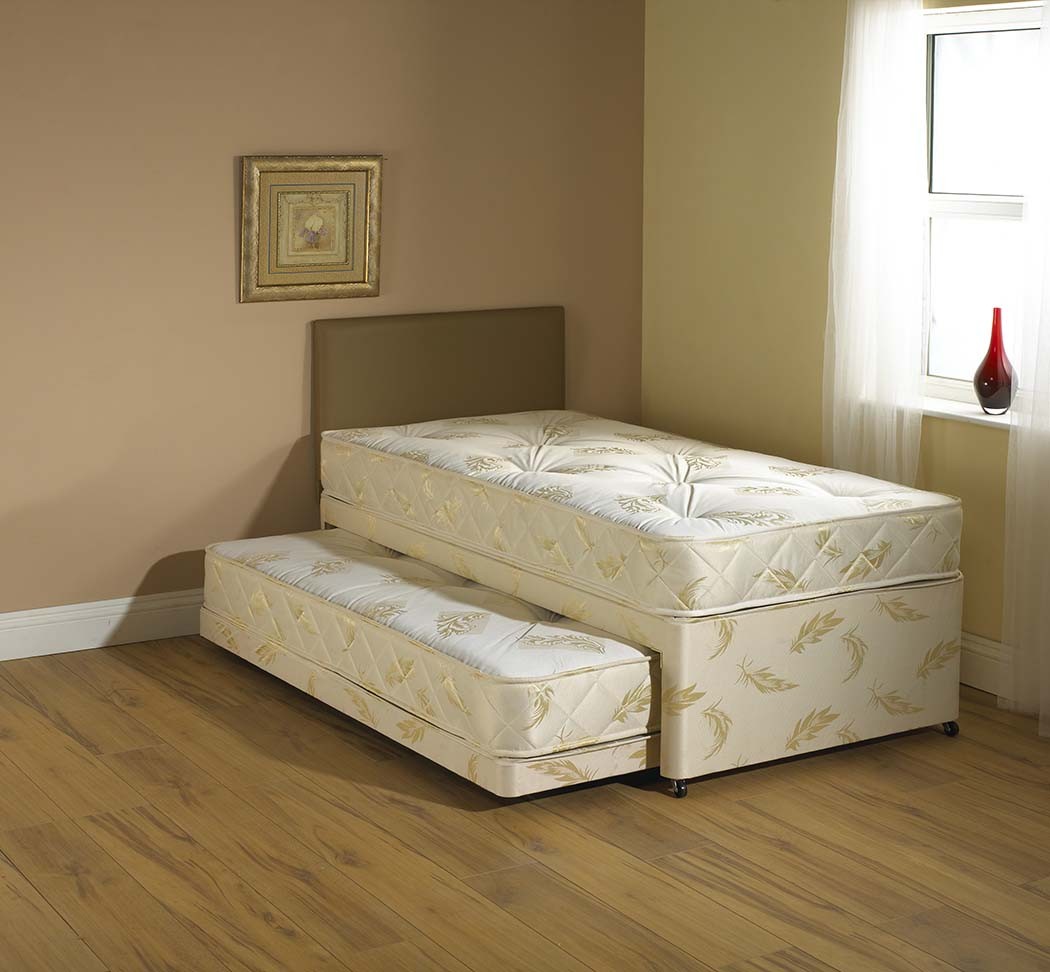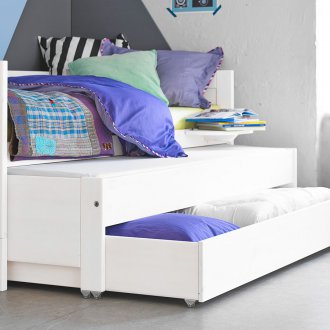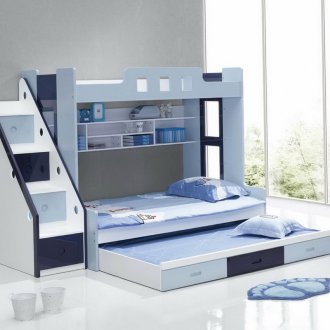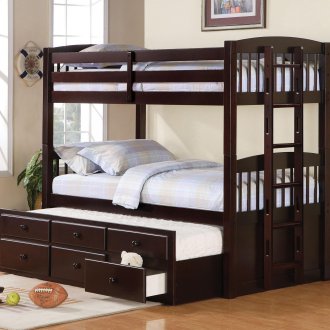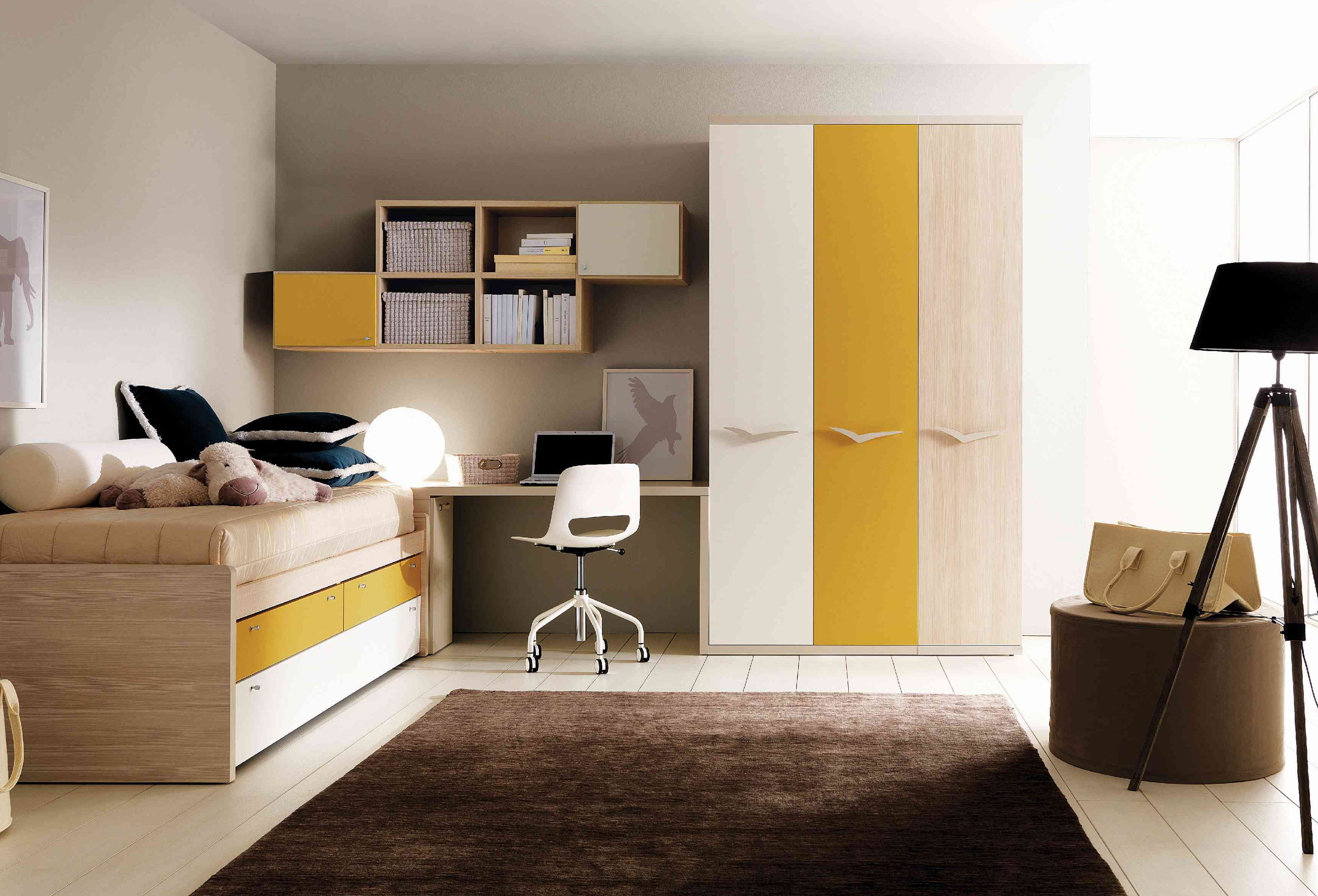A pull-out bed is a complete resting place for adults and children (21 photos)
Content
Naturally, the bed is the main place in the bedroom. Most often, the product occupies most of the room. Given the small size of the bedroom, this becomes the main problem in creating a stylish and cozy interior.
Rationally solve the issue of ergonomics helps the use of transformable furniture - a pull-out bed.
These models seem like the perfect alternative to a traditional bed. In comparison with the classic version of the organization of a berth, transformed products have several advantages:
- the bedroom space looks much more spacious;
- ease of use, since retractable / withdrawable technologies are much easier to operate than folding;
- reasonable prices for other furniture;
- creating a harmonious design and a neat appearance. A correctly selected and hidden bed can become an indispensable part of the interior.
Retractable models are perfect for small bedrooms, as well as make it possible to create an extra bed in any other room. Of course, such products are most in demand in one-room apartments.
Varieties of retractable models
The ottoman may well be considered as a full-fledged berth. The difference between the model and the sofa is the absence of soft and permanent backs and armrests. In the assembled form, the role of support for the back is performed by pillows that rely on small rigid sides.
Almost all models are equipped with a folding mechanism, which allows to increase the area of a berth. Some models of the ottoman are also equipped with drawers for linen.
The main advantages of the ottoman:
- flat surface of the bed (without joints or seams);
- simple and easy folding mechanism;
- Looks great in any room, convenient for use in a children's room or adult bedroom;
- does not take up a lot of space, but creates a full-fledged berth.
Some kind of ottoman is a sofa, which has a back and armrests of the same height. The most popular transformation mechanism for a sofa is a roll-out when the berth is pulled out from under the seat. Then the back falls into the formed space and a place is formed for a good rest. The most common models are double and triple (resembling a classic sofa).
Types of roll-out beds
The design of the product includes two important elements: the base and an extra seat that extends if necessary. The following types of models are distinguished:
- usual - a stationary bed with a pull-out berth. Such a design justifies itself in the case of frequent guests staying overnight;
- built-in - the sleeping place is masked in furniture.
Manufacturers and designers offer several options for arranging transformable furniture:
- in a cupboard - such a structure saves a lot of room space. The negative point is that the cabinet becomes less functional, since the main part is occupied by a berth. A bed with a lifting mechanism is a single and double.
- on the podium - the practicality of this option leaves no doubt about the choice.Since you can optionally equip the space above the bed: working corner, part of the guest area, the main berth. The purpose of the podium is selected individually and depends on the number of residents and rooms in the apartment. To create a complete and convenient zone on the podium, it is desirable that the ceiling height is not less than 2.8 m;
- in a specially equipped decorative niche. This is an elegant option for stylish interiors, but it loses in terms of saving space;
The sizes of the sliding models differ in all respects. The width is set for single beds (from 80 to 100 cm), one and a half (from 100 to 150 cm), double (from 160 to 220 cm). When choosing a model, it should be borne in mind that the single option is more suitable for teenagers.
Based on human height, manufacturers offer products of the following lengths: for teenagers and a bed for adults of short people - 190 cm, for buyers of medium height - 195 cm, for tall buyers - 200-220 cm.
Of great importance when arranging a berth is the height of the additional bed. The lower the mattress is, the more difficult it is to get out of bed, therefore, low models are not recommended to be installed in bedrooms for the elderly.
An acceptable sleeping height is considered to be the level of the knees, but due to the nuances of the design of a pull-out bed for two, it will not always be rational to install the product taking into account such a height.
Features of the device retractable mechanisms
A classic option is to equip the withdrawable models with a roller mechanism. Principle of operation: wheels are screwed to the bottom of the bed base, which, when the bed is pulled, move along the guides. Sometimes the systems are not equipped with guides, and the rollers roll directly on the floor. To get the transformer bed, just pull on the strap fixed in the central part of the bed. The design should roll out easily, without effort.
When assembling beds with lifting mechanisms, two types of devices are used:
- on coil springs - characterized by high reliability and durability, designed for about 70 years of daily use;
- on gas springs - it has excellent performance characteristics that are not inferior to coil springs, a feature is the silent use of the design.
Children's pull-out bed
The use of retractable models is very popular in the nursery. For a quiet sleep, the child needs a full-fledged resting place, but the availability of free space for outdoor games (especially for boys) is no less valuable. All these requirements are most fully met by pull-out beds (transformers). Like any piece of furniture, these designs have positive and negative sides. The advantages of the products include:
- practicality. Due to the capacious storage systems (drawers, shelves), the issue of cabinets and the affordable placement of things are solved;
- economical use of room space;
- mobility of contracting provides ease of operation;
- product durability and safety;
- wide range;
- lack of age restrictions - retractable systems allow you to create full-fledged beds for children from 1.5 years.
The disadvantages of the two-level design include: some discomfort of the child sleeping on the lower level (especially when the child descends, sleeping on the second level), over time, traces of rollers may form on the floor (especially on a soft floor).
Types of beds
Structural features of some models are determined by the number of berths created. The following types can be attributed to popular models:
- with fastened tiers. This budget model comes in a bunk (pull-out bed for two children) and a three-story (bed for three children).The lower berths are made in the full length of the structure, their movement is limited by withdrawable mechanisms. Since there are no side steps, a significant drawback is that when a child descends from the upper bed, he has to climb over the sleeping one on the lower tier. Despite the shortcomings, these are excellent options for arranging beds for large families;
- retractable system with the possibility of free movement of beds. Advantage - the withdrawable element can be installed anywhere in the room, so there are no significant drawbacks;
- with a sliding mechanism, side steps and with a sliding section (box). A very full and functional model. It is convenient to put bedding in drawers. The presence of steps allows the child to descend from the upper bed so as not to disturb the neighbor;
- roll-out bed-podium. In such a system, parallel beds are possible on the same level. The number of beds is determined individually, as are the options for arranging the surface above the podium.
Bed sizes
The dimensions of the berths are selected individually, taking into account the age and physiological characteristics of the children. It is advisable to choose full-sized beds with a width of up to 1 m and a length of up to 2 m.
The height of the lower tier is determined by the design of the system. In three-tier models, the lower bed is 10-15 cm from the floor. The bunk bed with drawers can have different heights of the lower tier. If the system is equipped with several rows of niches / drawers, then the height of the beds will be individual in each case.
If the beds are equipped with bumpers, the gaps between them should be within 2-6 cm. The standard depth for the location of the mattress is 7 cm, and the height of the side walls is 10 cm.
If the required dimensions were maintained during the assembly of structures, then the use of beds will be easy and convenient.
Basic requirements for cots:
- material safety guaranteed by certificates of quality and environmental standards (for wood products);
- convenience of transformation;
- certain dimensions of beds;
- quality of coating of paintings and edges;
- the presence of locking mechanisms (a sliding system with drawers and individual elements must reliably maintain a predetermined position) and sides.
Material requirements
In the manufacture of sliding systems, manufacturers most often use more than two materials. The frame is assembled from metal or wood, and a natural bar or board is used as the basis.
For the manufacture of basic elements used MDF, particleboard. Products with laminated surfaces are somewhat more expensive, but the beds are more durable, resistant to moisture and mechanical damage.
In the manufacture of furniture, it is important to avoid the appearance of chips and nicks on the surface and edge. Compliance of products with environmental and safety standards and standards must be confirmed by appropriate certificates.
A correctly selected model of a sliding bed system is quite capable of becoming the main element of the interior, as well as designing a comfortable place to relax. Significant saving of space at the same time allows you to equip apartments taking into account the wishes of residents and not depend on the number of square meters.

